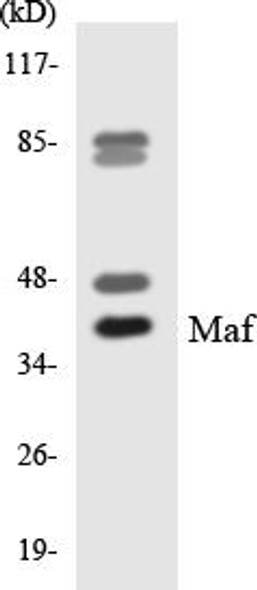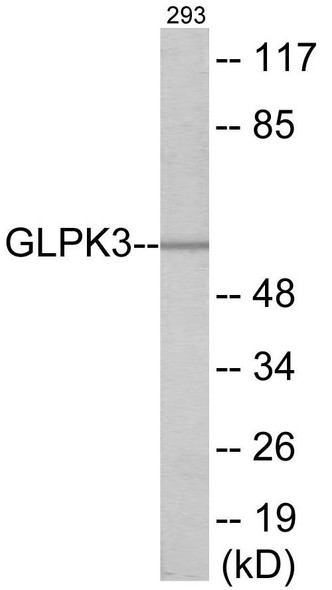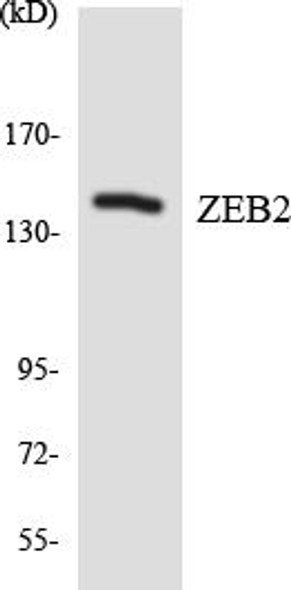CREM Colorimetric Cell-Based ELISA
- SKU:
- CBCAB01060
- Product Type:
- ELISA Kit
- ELISA Type:
- Cell Based
- Research Area:
- Cell Biology
- Reactivity:
- Human
- Mouse
- Rat
- Detection Method:
- Colorimetric
Description
CREM Colorimetric Cell-Based ELISA
The CREM Colorimetric Cell-Based ELISA Kit is a powerful tool for researchers looking to study cellular response to cAMP-response element modulator (CREM) activation. With high sensitivity and specificity, this kit allows for the accurate detection of CREM levels in cell lysates, offering reliable and reproducible results for a variety of experimental applications.CREM is a key transcription factor involved in the regulation of gene expression in response to various stimuli, including hormones and growth factors.
Aberrant CREM activity has been implicated in a range of diseases, including cancer, immune disorders, and neurological conditions, making it a valuable target for research and drug development.By utilizing the CREM Colorimetric Cell-Based ELISA Kit, researchers can gain valuable insights into the cellular mechanisms governing CREM function, paving the way for new discoveries and potential therapeutic interventions.
| Product Name: | CREM Colorimetric Cell-Based ELISA |
| Product Code: | CBCAB01060 |
| ELISA Type: | Cell-Based |
| Target: | CREM |
| Reactivity: | Human, Mouse, Rat |
| Dynamic Range: | > 5000 Cells |
| Detection Method: | Colorimetric 450 nmStorage/Stability:4°C/6 Months |
| Format: | 96-Well Microplate |
The CREM Colorimetric Cell-Based ELISA Kit is a convenient, lysate-free, high throughput and sensitive assay kit that can detect CREM protein expression profile in cells. The kit can be used for measuring the relative amounts of CREM in cultured cells as well as screening for the effects that various treatments, inhibitors (ie siRNA or chemicals), or activators have on CREM.
Qualitative determination of CREM concentration is achieved by an indirect ELISA format. In essence, CREM is captured by CREM-specific primary antibodies while the HRP-conjugated secondary antibodies bind the Fc region of the primary antibody. Through this binding, the HRP enzyme conjugated to the secondary antibody can catalyze a colorimetric reaction upon substrate addition. Due to the qualitative nature of the Cell-Based ELISA, multiple normalization methods are needed:
| 1. | A monoclonal antibody specific for human GAPDH is included to serve as an internal positive control in normalizing the target absorbance values. |
| 2. | Following the colorimetric measurement of HRP activity via substrate addition, the Crystal Violet whole-cell staining method may be used to determine cell density. After staining, the results can be analysed by normalizing the absorbance values to cell amounts, by which the plating difference can be adjusted. |
| Database Information: | Gene ID: 1390, UniProt ID: Q03060, OMIM: 123812, Unigene: Hs.200250/Hs.686182 |
| Gene Symbol: | CREM |
| Sub Type: | None |
| UniProt Protein Function: | CREM: a bZIP transcription factor that binds to the cAMP responsive element found in many viral and cellular promoters. An important component of cAMP-mediated signal transduction during the spermatogenetic cycle, as well as other complex processes. Alternative splice isoforms allow this protein to exert spatial and temporal specificity to cAMP responsiveness. Twentyeight alternatively spliced isoforms of the human protein have been described, with some of them functioning as activators and some as repressors of transcription. |
| UniProt Protein Details: | Protein type:Transcription factor; DNA-binding Chromosomal Location of Human Ortholog: 10p11.21 Cellular Component: transcription factor complex; cytoplasm; nucleus Molecular Function:protein binding; DNA binding; cAMP response element binding protein binding; transcription factor activity Biological Process: response to cAMP; transcription, DNA-dependent; regulation of transcription, DNA-dependent; multicellular organismal development; spermatogenesis; glycosphingolipid metabolic process; positive regulation of transcription from RNA polymerase II promoter; circadian regulation of gene expression; signal transduction; cell differentiation; negative regulation of transcription, DNA-dependent |
| NCBI Summary: | This gene encodes a bZIP transcription factor that binds to the cAMP responsive element found in many viral and cellular promoters. It is an important component of cAMP-mediated signal transduction during the spermatogenetic cycle, as well as other complex processes. Alternative promoter and translation initiation site usage allows this gene to exert spatial and temporal specificity to cAMP responsiveness. Multiple alternatively spliced transcript variants encoding several different isoforms have been found for this gene, with some of them functioning as activators and some as repressors of transcription. [provided by RefSeq, Jul 2008] |
| UniProt Code: | Q03060 |
| NCBI GenInfo Identifier: | 259016392 |
| NCBI Gene ID: | 1390 |
| NCBI Accession: | Q03060.5 |
| UniProt Secondary Accession: | Q03060,O75519, Q14501, A8K014, A8K3J7, A8K6A1, A8MPQ2 B4DXC1, C9J785, C9JZ10, E9PAR4, E9PHM1, |
| UniProt Related Accession: | Q03060 |
| Molecular Weight: | 361 |
| NCBI Full Name: | cAMP-responsive element modulator |
| NCBI Synonym Full Names: | cAMP responsive element modulator |
| NCBI Official Symbol: | CREM |
| NCBI Official Synonym Symbols: | ICER; CREM-2; hCREM-2 |
| NCBI Protein Information: | cAMP-responsive element modulator; CREM 2beta-a protein; CREM 2alpha-b protein; cAMP response element modulator; inducible cAMP early repressor ICER |
| UniProt Protein Name: | cAMP-responsive element modulator |
| UniProt Synonym Protein Names: | Inducible cAMP early repressor; ICER |
| Protein Family: | cAMP-responsive element modulator |
| UniProt Gene Name: | CREM |
| UniProt Entry Name: | CREM_HUMAN |
| Component | Quantity |
| 96-Well Cell Culture Clear-Bottom Microplate | 2 plates |
| 10X TBS | 24 mL |
| Quenching Buffer | 24 mL |
| Blocking Buffer | 50 mL |
| 15X Wash Buffer | 50 mL |
| Primary Antibody Diluent | 12 mL |
| 100x Anti-Phospho Target Antibody | 60 µL |
| 100x Anti-Target Antibody | 60 µL |
| Anti-GAPDH Antibody | 60 µL |
| HRP-Conjugated Anti-Rabbit IgG Antibody | 12 mL |
| HRP-Conjugated Anti-Mouse IgG Antibody | 12 mL |
| SDS Solution | 12 mL |
| Stop Solution | 24 mL |
| Ready-to-Use Substrate | 12 mL |
| Crystal Violet Solution | 12 mL |
| Adhesive Plate Seals | 2 seals |
The following materials and/or equipment are NOT provided in this kit but are necessary to successfully conduct the experiment:
- Microplate reader able to measure absorbance at 450 nm and/or 595 nm for Crystal Violet Cell Staining (Optional)
- Micropipettes with capability of measuring volumes ranging from 1 µL to 1 ml
- 37% formaldehyde (Sigma Cat# F-8775) or formaldehyde from other sources
- Squirt bottle, manifold dispenser, multichannel pipette reservoir or automated microplate washer
- Graph paper or computer software capable of generating or displaying logarithmic functions
- Absorbent papers or vacuum aspirator
- Test tubes or microfuge tubes capable of storing ≥1 ml
- Poly-L-Lysine (Sigma Cat# P4832 for suspension cells)
- Orbital shaker (optional)
- Deionized or sterile water
*Note: Protocols are specific to each batch/lot. For the correct instructions please follow the protocol included in your kit.
| Step | Procedure |
| 1. | Seed 200 µL of 20,000 adherent cells in culture medium in each well of a 96-well plate. The plates included in the kit are sterile and treated for cell culture. For suspension cells and loosely attached cells, coat the plates with 100 µL of 10 µg/ml Poly-L-Lysine (not included) to each well of a 96-well plate for 30 minutes at 37°C prior to adding cells. |
| 2. | Incubate the cells for overnight at 37°C, 5% CO2. |
| 3. | Treat the cells as desired. |
| 4. | Remove the cell culture medium and rinse with 200 µL of 1x TBS, twice. |
| 5. | Fix the cells by incubating with 100 µL of Fixing Solution for 20 minutes at room temperature. The 4% formaldehyde is used for adherent cells and 8% formaldehyde is used for suspension cells and loosely attached cells. |
| 6. | Remove the Fixing Solution and wash the plate 3 times with 200 µL 1x Wash Buffer for five minutes each time with gentle shaking on the orbital shaker. The plate can be stored at 4°C for a week. |
| 7. | Add 100 µL of Quenching Buffer and incubate for 20 minutes at room temperature. |
| 8. | Wash the plate 3 times with 1x Wash Buffer for 5 minutes each time. |
| 9. | Add 200 µL of Blocking Buffer and incubate for 1 hour at room temperature. |
| 10. | Wash 3 times with 200 µL of 1x Wash Buffer for 5 minutes each time. |
| 11. | Add 50 µL of 1x primary antibodies (Anti-CREM Antibody and/or Anti-GAPDH Antibody) to the corresponding wells, cover with Parafilm and incubate for 16 hours (overnight) at 4°C. If the target expression is known to be high, incubate for 2 hours at room temperature. |
| 12. | Wash 3 times with 200 µL of 1x Wash Buffer for 5 minutes each time. |
| 13. | Add 50 µL of 1x secondary antibodies (HRP-Conjugated AntiRabbit IgG Antibody or HRP-Conjugated Anti-Mouse IgG Antibody) to corresponding wells and incubate for 1.5 hours at room temperature. |
| 14. | Wash 3 times with 200 µL of 1x Wash Buffer for 5 minutes each time. |
| 15. | Add 50 µL of Ready-to-Use Substrate to each well and incubate for 30 minutes at room temperature in the dark. |
| 16. | Add 50 µL of Stop Solution to each well and read OD at 450 nm immediately using the microplate reader. |
(Additional Crystal Violet staining may be performed if desired – details of this may be found in the kit technical manual.)










